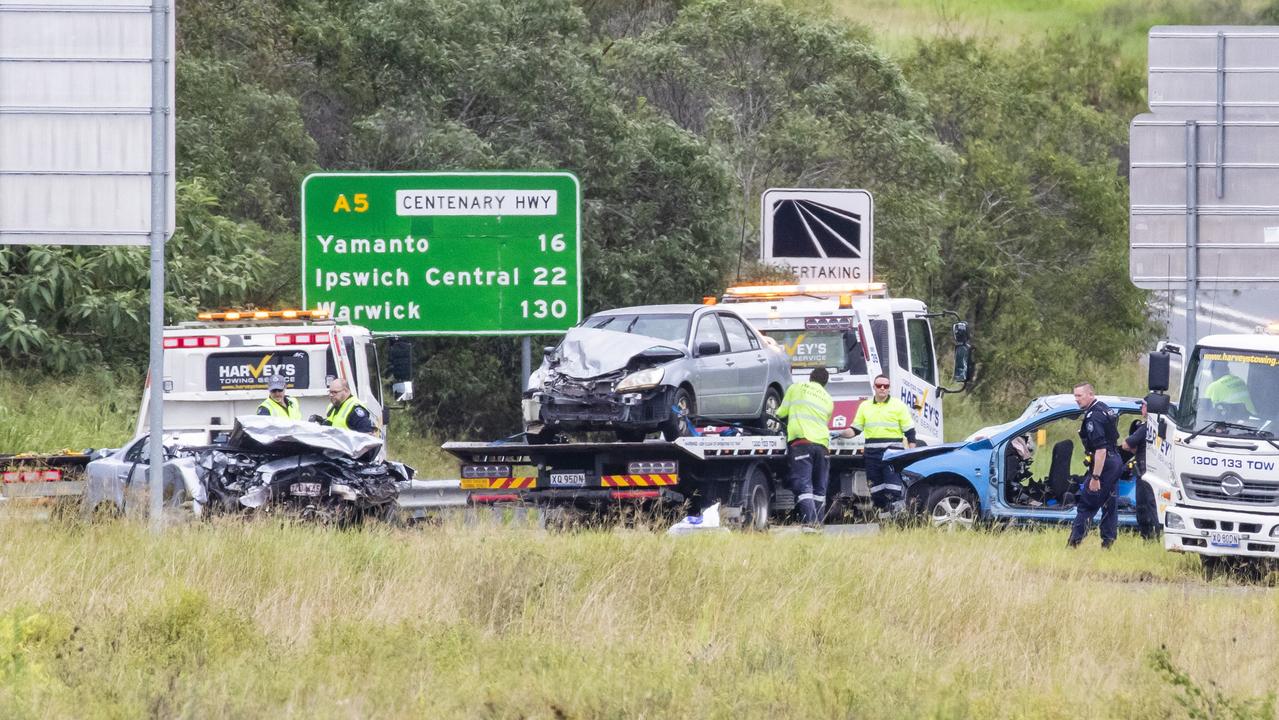Mt Everest: Why this year’s climbing season is the deadliest
Experienced climbers and experts have watched with dismay and shock as, in the past few weeks, 11 climbers have died on the world’s highest mountain. They say a mix of factors are to blame.
Travel Incidents
Don't miss out on the headlines from Travel Incidents. Followed categories will be added to My News.
Alyssa Azar remembers it as being “pretty surreal”.
Three years ago, aged just 19, the Toowoomba teenager became the youngest Australian to summit the world’s highest mountain, the famed and mystical Mt Everest.
“It was pretty surreal above anything else, actually standing there was pretty surreal,” she says now of her 2016 ascent to the top of the world. Two years later she did it again.
She, like many serious mountaineers, has watched with dismay and shock as, in the past few weeks, 11 climbers have died on Mt Everest.
The reality was starkly brought home by a photograph, taken on May 22, of a queue of climbers waiting to summit, in an area known as the death zone, due to its altitude and the inability to survive there without supplemental oxygen.
“I remember seeing the photos and being quite shocked. It certainly wasn’t my experience when I was there,” Ms Azar says of the photos which have caused alarm.
MORE EVEREST NEWS:
‘I’m alive’: Aussie Mt Everest survivor breaks silence
Matt Kitchin: Congestion on Everest needs a safer solution
Angela Mollard: Mt Everest is a ‘grotesque theme park’

Mountaineers and experts around the world are citing a range of factors which have combined to make this year’s Everest climbing season — a short window in May — the deadliest in four years.
Firstly, the Nepalese Government has issued 381 climbing permits to foreigners this year and it is a necessity for each person climbing to hire a Sherpa guide — meaning there are close to 800 people climbing to the top.
Alan Arnette, an American mountaineer who summited Everest in 2011, told News Corp Australia the root problem was the window to summit was tiny this year — only five days compared to 11 consecutive days last year. This refers to days when the jet stream or high winds, move off the mountain.
Mr Arnette runs a climber’s consulting agency called Summit Coach and writes a regular blog on Everest, updating it frequently with the latest news from the mountain.
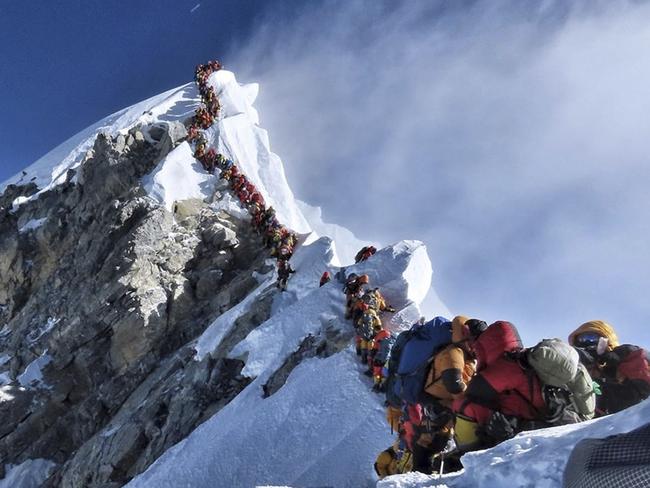
He argues it’s not just overcrowding that is responsible for deaths but also too few summit windows, too many inexperienced people climbing and inadequate climber support.
“The root problem this year were too few suitable weather days for summits. It was exacerbated by inexperienced members with unqualified support who didn’t know how to navigate conditions above 8000 meters (low oxygen, snow slopes, snow rock etc),” Mr Arnette said.
He says these are all basic skills which someone climbing Everest should have tuned and honed years before on lesser peaks.
Mr Arnette says the calibre and experience of potential climbers should be more regulated and that they should have already climbed to 8000 metres before attempting Everest.
“Everest is … (a) mountain that can easily handle hundreds of climbers but not all on the same tiny ridge on the same day,” Mr Arnette says.
He says many climbers are inexperienced, have inadequate training, inadequate support and run out of oxygen, ignore warning signs and don’t turn back or have hidden health issues.
The impact of large crowds, all trying to summit on the same day, slows the pace, forces people to use more oxygen and spend more time at high altitude which increases fatigue.
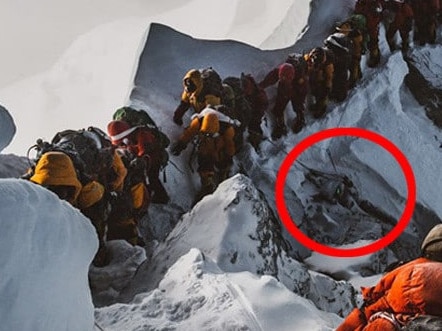
“This last point is where the discussion needs to take place. It’s clearly true that crowds slow the pace of a climber and thus increase fatigue and the use of oxygen. Some of these climbers who died spent 10 or 12 hours to get to the summit and four to six hours to get back down near the South Col. In other words, in some cases a 16, 18 or even 20 hour day. It’s rare to carry oxygen for that much time thus forcing the Sherpas to turn down the flow or give up their own personal supply — either way, not a good situation,” Mr Arnette wrote on his blog.
Mr Arnette has analysed the 11 deaths this season and says four of them were due to altitude illness that was “perhaps related to crowds through a long time over 8000m and going too slowly”, six of the deaths were altitude illness not related to crowds and one was a fall, also not related to crowding.
The problems which have manifested in the deadly season at Mt Everest this year are complex — too many permits, too many inexperienced climbers who want to walk on top of the world without doing the hardcore training and cut-price expeditions and guide services, opening up the experience to more and more people.
When Alyssa Azar did her first summit in 2016, she paid $US40,000 for the total cost of the expedition. People are now paying much less and there is no regulation of how much experience you need to have before being accepted to attempt Everest.
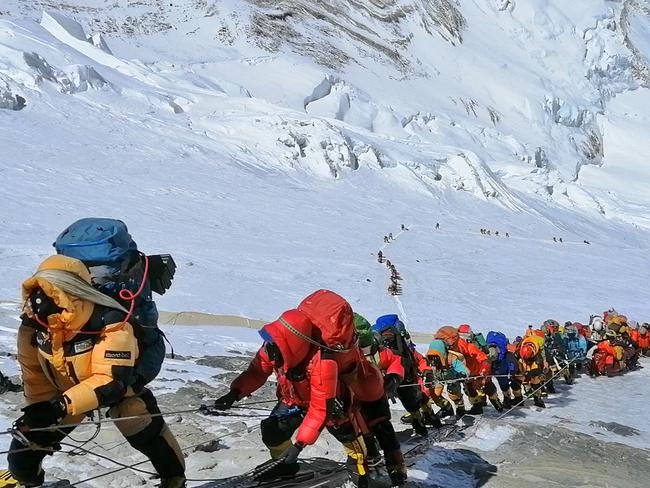
Ms Azar says there is no regulation of the amount of training or preparation you should have done.
“The crowding is a small percentage of the whole picture of what is going on. It is up to companies to decide who they take.”
She says while some companies insist on climbers having been to 7000-8000 metres previously, others don’t.
Before her own attempt at Everest, Ms Azar had been to 7000 metres in the Andes and to 8000 metres elsewhere. She had also completed a climbing course in New Zealand in preparation.
Then there’s ego. People want to say “I stood on top of the world” and if they pay for that privilege they want it to happen.
“There is a bit of an entitlement mentality. People say, well I paid for a summit,” Ms Azar says.
In her case it was made clear they were paying for an expedition, not necessarily just to summit.
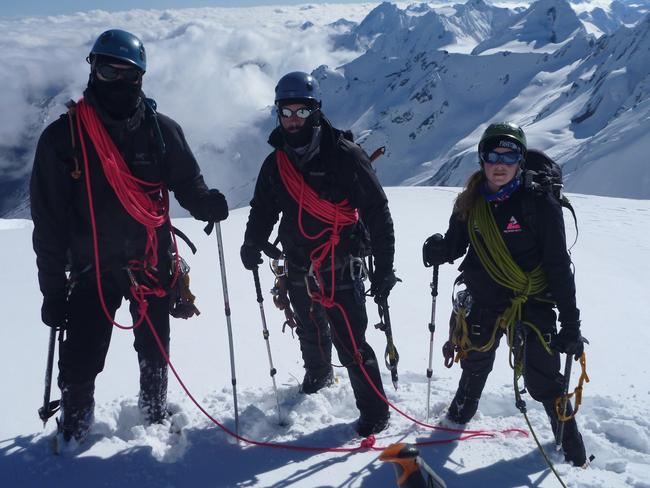
“The Nepalese side of the mountain needs to start restricting permits but I also think it is about who is climbing. Other than financial, there is no regulation about what you have done.
“The number of inexperienced climbers is beyond belief. You get those who don’t know how to use the most basic equipment, they clearly haven’t physically prepared for it, they haven’t done anything up to 6000m and nothing beyond that in high altitude. They have never put on crampons (attached to boots) and they are learning that at 7000m,” Ms Azar says.
Climbers who have been on Mt Everest these past weeks have posted their despair on social media.
Elia Saikaly wrote on Instagram of the “death, carnage, chaos, line-ups, dead bodies”.
He wrote: “Everything you read in the sensational headlines all played out on our summit night.”
Others however are not painting such a bleak picture.
Karma Tenzing, who himself summited and who owns Into The Himalaya Treks and Expedition posted pictures on Twitter of his ascent to the summit on May 15 “devoid of (traffic) jams”.
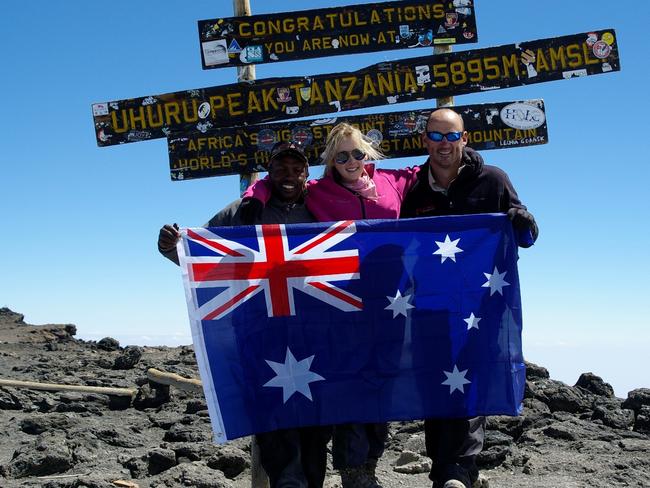
And he has pointed out that while 381 climbing permits were issued this year, it is not a massive amount more than previous years — 347 issue last year and 375 in 2017.
Canberra man, Gilian Lee, was lucky. He almost died on Everest this season, attempting to summit without oxygen from the Tibetan side, which reportedly has not been as crowded as the Nepalese side.
Mr Lee was discovered unconscious at 7500 metres and was brought down, reportedly in a dramatic rescue involving yaks.
Late on Thursday he tweeted from his Kathmandu hospital bed: “I am alive. Something went amiss on the summit push after C2. In hospital … surprisingly mum is here … which is good to get medical advice. Body wrecked with liver problems, no phone and vision damage. Piecing what happened. Rest.”
Eleven others were not so lucky, including two Americans, a Brit, two Irish men, four Indians, a Nepalese mountain guide and an Austrian.
With this year’s climbing season now all but over, authorities in Nepal are being called upon to better regulate the industry which brings much needed cash to the local economy of one of the world’s poorest countries.


